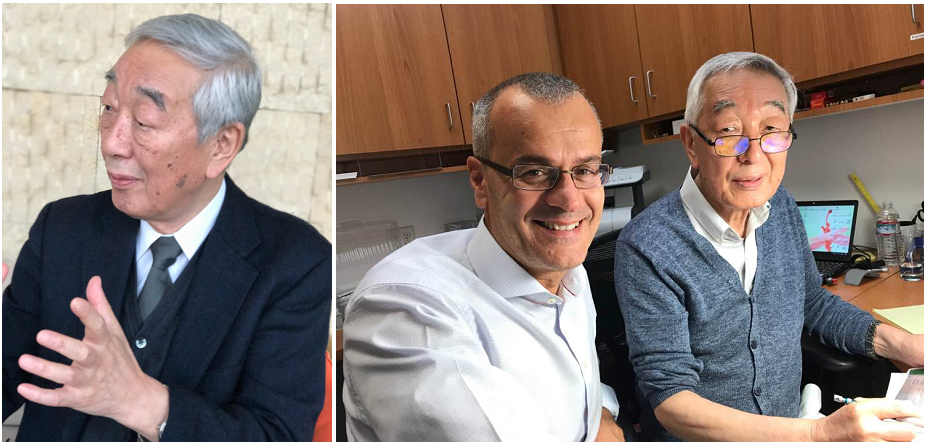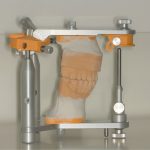Craniomandibular Orthodontics
Occlusion
medicine
VIDEO TESTIMONIALS

My teacher and mentor Professor Sadao Sato who is considered, by many orthodontist all over the world, as the best living orthodontist of our times, is the founding father of the therapeutic approach “ Craniomandibular Orthodontics”.
It is a big luck and a great honor for me to meet and work with him during my every 3 months visit to San Francisco.
I would also, like to extend a big thanks to Dr. Heike Kramer ( one of the finest dentist in the world) and Dr. Bob Lamb who inspired me to begin this fantastic professional trip from their teaching institution in San Francisco.
Dr Petros Kokkinos
A. TREATMENT OF THE DYSFUNCTION OF THE CRANIOMANDIBULAR SYSTEM:
The orthodontist Dr. Petros Kokkinos is specialized in the treatment of the dysfunction of the craniomandibular system. He did his specialization with Professor Sadao Sato in San Francisco , USA. Our clinic has become a center of excellence in the treatment of these symptoms. Patients with malocclusion( wrong bite) have very high possibility to develop even from a young age symptoms like, sounds and /or pain in the temporomandibular Joint (TMJ) , frequent and strong headaches, pain, spasm and cramps of the neck and shoulder area, severe wearing of the teeth, enamel cracks, severe teeth sensitivity, gum recessions, unjustifiable periodontal bone loss, tinnitus with or without partial hearing loss. The wrong bite invites high intensity bruxism (grinding of the teeth during sleep) which overloads the temporomandibular joints, the teeth, the periodontium ( gums and bone which surrounds the roots of the teeth) the masetteric (chewing) muscles , the neck , shoulder and back muscles and as a result the patient develops the above mentioned symptoms In order to alleviate these symptoms which is the result of the wrong bite , our treatment approach is based on an extensive, detailed and thorough diagnostic methodology:
Condylography: We use the Cadiax system to register electronically every movement of both condyles in the joints. Then, all the information which is accumulated from the condylar movement tracings is analyzed and it helps us to have a clear and accurate diagnosis of the condition of the both joints.

Brux Checkers: They are delivered to the patient on the first appointment and we ask the patient to use them separately on either dental arch for 2 continuous nights during sleep each. They help us to register the Bruxism pattern of each patient which is a valuable information for diagnosis and treatment plan.

SAM Articulator: It is used to mount the dental casts of the patient under the real intraoral and Joint conditions of the patient. It gives us detailed and thorough information about the dental malocclusion.
X- Rays: Lateral cephalogram, Panoramic, Posteroanterior cephalogram.
The cephalograms are analysed on the computer and the all the measurements are registered and used for the treatment plan. The panoramic x-ray gives us information about the condition of all teeth, the bone and the temporomandibular joints , as well as the inclination of the posterior teeth.
Photographs: Extraoral- They give us valuable information regarding the soft tissues of the face, neck and shoulders. Also, we can identify and measure facial asymmetries and problems which are related with disturbed body posture. Intraoral- We evaluate the dental relationship and the condition of the teeth and the soft tissues.
The treatment planning is always based on facial esthetics but mainly on the establishment of harmony among the temporomandibular joints, dental relationship, inclination of the occlusal plane and function of the neuromuscular system. The success of this treatment approach results to the reduction or elimination of all the above mentioned symptoms. Very often the practice of this treatment approach is called “ Occlusion medicine”.







B. CRANIOMANDIBULAR ORTHODONTICS:
Treatment of skeletal discrepancies:
With this treatment approach, cases with severe skeletal discrepancies can be successfully treated without surgery. The Orthodontic treatment is performed in a way that changes the dunamic( not just the static) relationship of the upper and lower jaws and also the relationship between both jaws and the cranial bones. This happens because during the treatment planning we take into consideration the dynamic interaction between the upper and lower jaws and the cranial bones , especially the temporal bone since it is in a direct and dynamic relationship with the mandible( lower jaw) for the formation of the temporomandibular Joint. The modification of the inclination of the occlusal plane in combination with the modification of the vertical dimension of the occlusion and the high adaptation ability of the lower jaw in these “changes” lead to highly esthetic and stable results eliminating this way the need for orthognathic surgery. This treatment approach reduces significantly the discomfort of the patient and the cost of the treatment, avoids surgical intervention (osteotomy), elimination of post treatment complications.












































